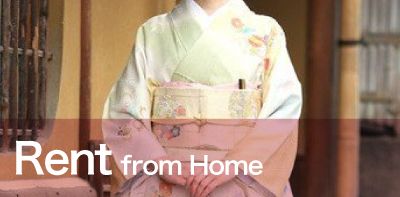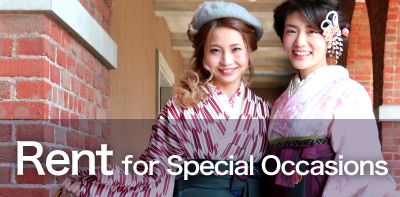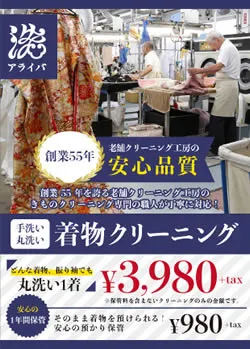Wedding kimono
Most people outside of Japan know what a kimono is: a traditional Japanese clothing. What most people do not know is the distinction between the many different types of kimonos and when they are worn and by whom. Specific types of kimonos exist purely for weddings, whether you are the marrying couple or merely attending as a guest.The growing range of wedding kimono options is one of the factors behind the traditional garments’ popularity.
Shiromuku wedding kimono

Shiromuku is a wedding kimono originally worn at weddings in samurai families, the shiromuku has become one type of wedding kimono worn by brides in Japan. White has symbolized the sun’s rays since ancient times, and from the Heian period, pure white bridal kimonos became prized. The shiromuku stands out due to all its parts — over-robe, under-robe, obi sashi, etc.. — being pure white. Brides at the wedding in shrines always wear white clothes. Why Japanese brides have such custom to be covered with only white things on a day of wedding ceremony? It’s because “white” has been regarded by Japanese people as a symbol of pureness, cleanness or virginity. “White” can be dyed with any color, so shiromuku means that brides are ready to be dyed with color of groom. “White” has also been regarded as a sacred color for many years, so Japanese people have believed shiromuku to be suitable for the wedding ceremony held at sacred and religous places.
Shirokakeshita wedding kimono
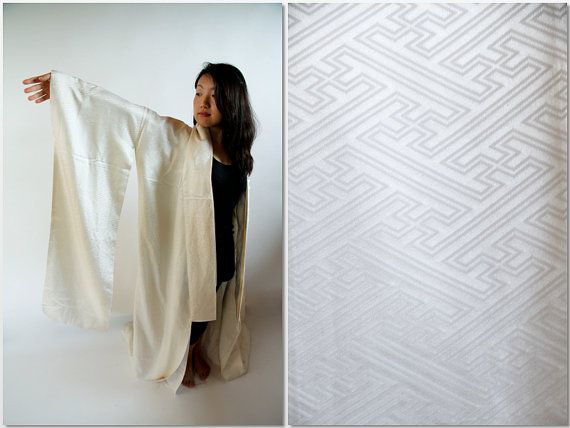
A Shirokakeshita is the japanese wedding kimono a bride would wear during a shinto wedding. Think of this wedding kimono as the wedding dress we wear during western weddings, the white is to signify pureness, but it goes a bit deeper than that, because it also signifies the brides willingness to be colored by the family she is marrying in to(As in the customs, values, and traditions). This kimono also has sleeves like that on a furisode and can have padding around the hem, the reason they do this is so, as the bride is walking, it drags on the ground in an appealing way, again comparing it to western weddings, think of the veil and the train of the dress. Though this wedding kimono is important the Bride can go through as many as 5 costume changes during her wedding, though in modern times many opt to just go through 2 or 3 costume changes, ending with a black tomesode (remember, they’re for married women).
Uchikake wedding kimono
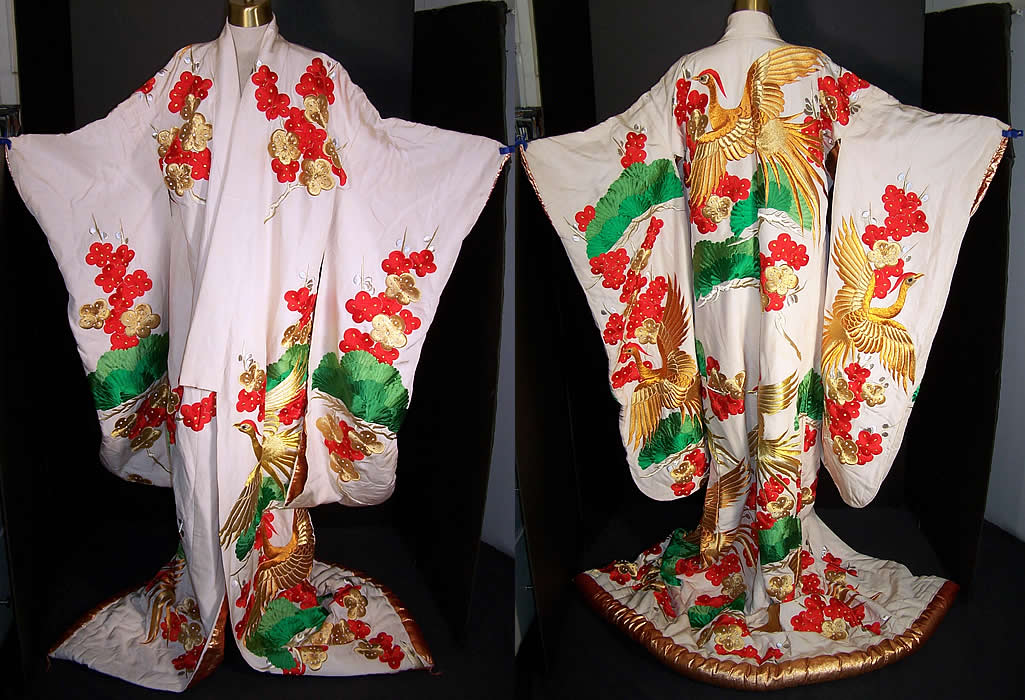

The Uchikake is another wedding kimono a girl will wear during her wedding, like the Shirokakeshita it has a padded hem and Furisode sleeves. The Uchikake wedding kimono usually have very elaborate designs, either painted, embroidered or woven in. Most likely all of the above. Generally has a red base and very highly colored patterns, but can also be all white. Unlike the Shirokakeshita it has a colorful design, unless the wedding is a shinto wedding in which, again, it will be white. It’s worn more like a coat, over the Shirokakeshita or the Kakeshita (covered next) and does not have an obi tied around it. The hem will be held up by the bridesmaids while the bride is walking down the isle.
Irouchikake wedding kimono


The irouchikake (an unbelted, padded outer robe in various colors and designs) is an uchikake wedding kimono in a color other than white that is worn on formal occasions and decorated with cranes, tortoiseshells, and other auspicious objects that symbolize longevity and prosperity.
Hikifurisode wedding kimono
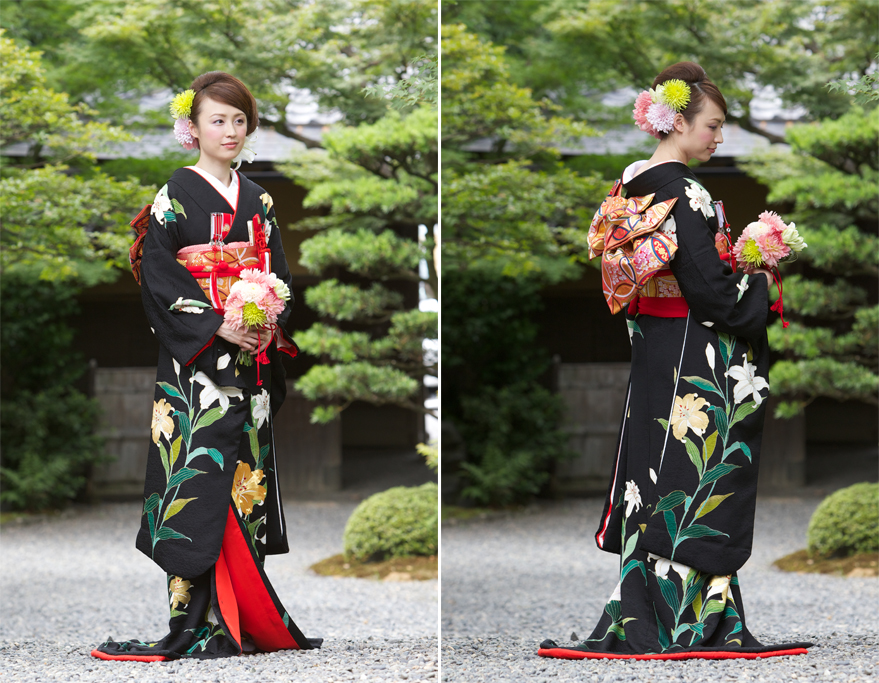
Hikifurisode are the most favored type of kimono today. This is the one typically called a wedding kimono, but might better be called the after-wedding kimono. Has long, sweeping sleeves and elaborate patterns that run, unbroken, across the back and onto the backs of the sleeves; around the whole body; and across the front and onto the fronts of the sleeves.This is worn after the ceremony, at the reception. These kimonos have an elegant silhouette reaching down to the trailing hem for an overall effect that is feminine and sophisticated. Black hikifurisode are particularly popular. The material is embroidered in dyed, gold, or silver threads, and the style is both elegant and radiant. The colorful designs are themselves works of art. Black hikifurisode are often worn with a nontraditional hairstyle, and this contrast is yet another reason for their popularity.
Kakeshita wedding kimono
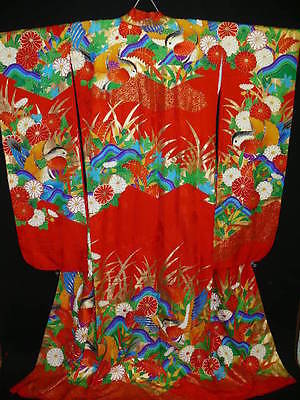
The final wedding kimono is called the Kakeshita. This kimono is worn in place of the shirokakeshita and instead of it being white, it’s very colorful, again with a padded hem and the furisode sleeves. The patterning would be quite elaborate, asymmetrical, and include auspicious marraige symbols such as pine (for endurance and longevity) or cranes (which mate for life). Like the uchikake, the kakeshita has a bright orange-red padding at the hem but this padding is much lighter – an inch of padding as compared to 2-3″ of padding on the uchikake. The patterning of the kakeshita is also typically sparse around the mid-section, as this would be covered with a formal obi belt. The kakeshita fabric is similar to a furisode kimono, and the sleeves are usually just as long. Though it’s not as popular to wear as the Shirokakeshita brides can opt to change into this if they wish.



